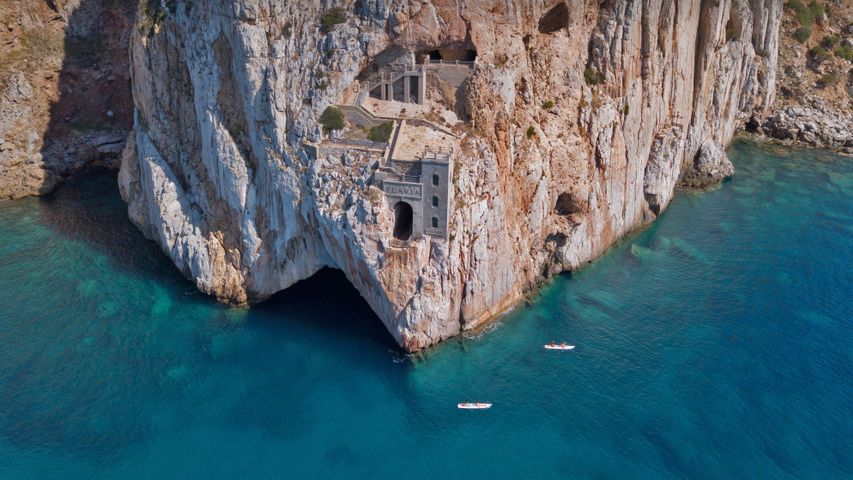Porto Flavia, Sardinia, Italy
© Visualframing/Adobe Stoc
A cliffhanging harbour. A cliffhanging harbour in Sardinia
The mining industry in Sardinia, Italy was booming in the early 20th century, as European nations started rebuilding from the damage of World War One. But Sardinia ran into logistical issues as it tried to export the zinc, lead and other minerals that were in high demand. Miners were using modern techniques to extract increasing amounts of ore, but it wasn't until 1924, when engineer Cesare Vecelli designed and built the mining hub along the cliffs in Porto Flavia, that getting product off the island matched their ability to extract it.
Before Vecelli's architectural marvel at Porto Flavia, ore was often carried by workers in wicker baskets and loaded onto boats, a process that was slow, expensive and often dangerous. But Vecelli's innovation allowed miners to lower ore directly onto ships waiting in the harbour below, saving time and cutting costs by up to 70%.
Porto Flavia, which Vecelli named after his daughter, wasn't purely an exercise in productivity. The engineer added design flourishes including a concrete tower, as well as an arched doorway and windows, giving the port a certain elegance not normally associated with mining. While Porto Flavia closed in the 1990s, it now has a new lease of life, as a Unesco-protected tourist attraction.
Related Images
Bing Today Images





 Porto Flavia, Sulcis-Iglesiente, Sardinia, Italy
Porto Flavia, Sulcis-Iglesiente, Sardinia, Italy
 The Milky Way framed by Double Arch in Arches National Park, Utah, United States
The Milky Way framed by Double Arch in Arches National Park, Utah, United States
 Kachina Bridge, Natural Bridges National Monument, Utah, United States
Kachina Bridge, Natural Bridges National Monument, Utah, United States
 Desert bighorn sheep in Valley of Fire State Park, Nevada, United States
Desert bighorn sheep in Valley of Fire State Park, Nevada, United States
 Ad-Deir, Petra, Jordan
Ad-Deir, Petra, Jordan
 Neptune's Grotto, Sardinia, Italy
Neptune's Grotto, Sardinia, Italy
 Tasmans Arch, Tasmania, Australia
Tasmans Arch, Tasmania, Australia
 Double Arch seen through Cove Arch, Arches National Park, Utah, USA
Double Arch seen through Cove Arch, Arches National Park, Utah, USA
